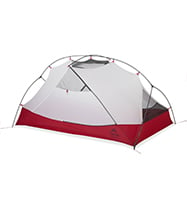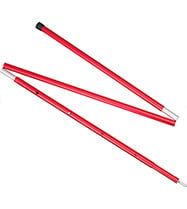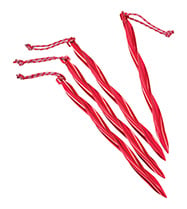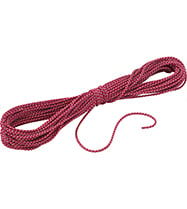Setting Up Your Tent in the Wind
Howling wind—it can torment us in the backcountry. But few are the campsites, especially above treeline, that the wind won’t find. Perhaps the most frustrating of the windy-weather camp tasks is setting up your shelter. Adventure photographer and host of Epic Trails and Backpacking TV Eric Hanson battled the infamous gusts of Patagonia on a solo trek and quickly learned some key tricks for putting up your home when the air is blowing fiercely. Read on to learn his methods.
Caption: Eric Hansen sets up the Hubba Hubba NX tent in the intense Patagonia wind.
1. Pick the right spot
When picking a tent site, consider which way the wind is blowing. Position the narrowest part of your tent, usually the foot, into the wind so that your tent isn’t a great big sail. Also, look for natural features like trees or boulders that could serve as windbreaks.
2. Get heavy bits of gear ready as anchors
Heavier bits of gear can serve as anchors for your tent once you unpack it. Have those things ready to use, and toss them into your tent to weigh it down.
3. Connect your tent poles first
Before unpacking your tent and rainfly, set up your poles. Once the tent is out in the wind, it will become a wild, flapping beast and you’ll need the poles quickly to tame it and give it a structure that you can manage.
4. Stake out the windward side of the tent
With two tent stakes in hand, unpack the tent body first. Grab the tent by whatever side will be facing the wind and let the wind blow the tent body away from you. Then securely stake down this side of the tent.
NOTE: Set up your tent footprint later.
5. Add the poles
Place the poles on top of the tent to hold it down. Insert the poles in the grommets, starting with the side you just staked down. Then stake down the other side, add the poles and clip the tent to the poles.
TIP: Now toss in heavy bits of gear, like your pack, to anchor the tent.
6. Attach the rainfly
As you unpack it, hold the rainfly from the side that will be facing into the wind. Allow the wind to lift the fly over the tent. If you’re solo, this is the toughest part: Scurry back and forth to attach each of the fly’s points.
7. Guy out and cinch down the tent
It’s important to guy out and cinch down your tent. This adds strength to its structure, bracing it against the power of the wind. When tents are loosely connected, they’re more likely to be damaged by the whipping and flapping effects of the wind (and to keep you up at night).
Related Posts:
- 5 Tips for Staying Warm & Comfortable in a Tent
- Tent Care Tips: How to Make Your Tent Last Longer
- Tent? No Thanks. I Prefer Tarps.

About the Author
Eric Hanson is the host of TV’s Epic Trails and YouTube’s Backpacking TV. He is also a freelance journalist, photographer and filmmaker specializing in outdoor adventure and travel. Eric has traveled extensively, exploring more than eighty countries during his long-term travels. When not out adventuring, he lives in Flagstaff, Arizona. Follow him on Instagram, erichansonTV.
Updated. Originally Published September 27, 2016.




